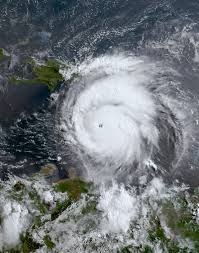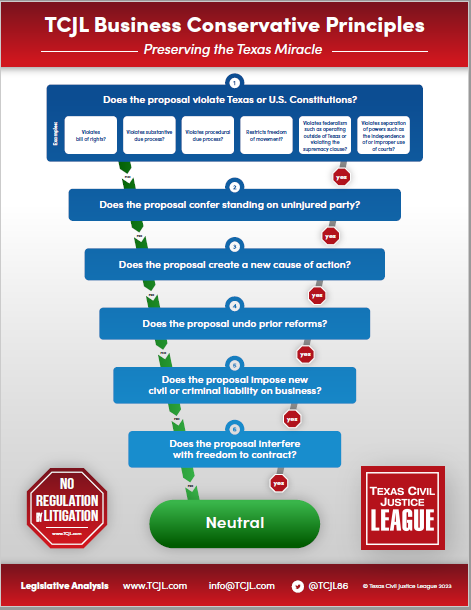 The Texas Supreme Court has reversed a puzzling Houston [14th] Court of Appeals decision upholding a multi-million dollar judgment in a Hurricane Harvey flooding case in which Plaintiffs’ expert declined to opine that the design of Defendant’s manufacturing facility was a but-for cause of the flooding as opposed to two feet of rain.
The Texas Supreme Court has reversed a puzzling Houston [14th] Court of Appeals decision upholding a multi-million dollar judgment in a Hurricane Harvey flooding case in which Plaintiffs’ expert declined to opine that the design of Defendant’s manufacturing facility was a but-for cause of the flooding as opposed to two feet of rain.
Tenaris Bay City, Inc. v. Ricky Ellisor, et al. (No. 23-0808; May 23, 2025) is another piece of the pile of litigation that followed in the wake of Hurricane Harvey in 2017. Here homeowners in Matagorda County sued a pipeline manufacturing company for design defects that caused flood damage to tehir homes. They won at trial, and the Houston [14th] Court of Appeals affirmed. In an opinion by Chief Justice Blacklock, however, SCOTX reversed.
The issue was whether Plaintiffs’ produced legally sufficient evidence of causation. To do that, Chief Justice Blacklock wrote, they had to prove, “with reliable evidence, that their flood damage would not have occurred if not for [the facility’s] tortious actions.” Defendant Tenaris operated a pipeline fabrication facility in Bay City, which was build on a former sod farm. Tenaris retained the engineering company Fluor to design a drainage system and Jones & Carter, a construction and design firm, to review it for purposes of approval by the county drainage district. The district approved the plan, which included water detention ponds surrounded by berms to prevent uncontrolled runoff. But no plan is adequate to control runoff produced by more than 21 inches of rain in four days. Still, Plaintiffs sued for negligence, gross negligence, negligence per se, and negligent nuisance. Fluor and the construction firm settled, but Tenaris stood its ground. A jury awarded $2.8 million to Plaintiffs, and the court of appeals signed off. Tenaris sought review.
The opinion offers a straightforward analysis of the elements of a negligence cause of action, specifically the causation element. Texas follows the cause-in-fact standard, which requires that the tortfeasor’s act or omission constitute a substantial factor “but also that it be a but-for cause of the injury or occurrence.” Plaintiff’s expert opined that Tenaris’s drainage plan directed too much water in one direction, but the expert declined to assert that the plan was a “but-for” cause of the flooding. In fact, the expert testified that he could have done a specific analysis for each of the flooded homes based on topographic information, hydrographic models, soil maps, and other data, but he didn’t do it. He also couldn’t say that Tenaris’s conduct was a substantial factor in causing Plaintiffs’ injuries. This reticence (and unpreparedness) rendered his opinion “fundamentally unreliable” because “it fail[ed] to exclude other plausible causes with reasonable certainty” (citations omitted). The fact that one of the worst, if not the worst, storms in recorded history dumped two feet of rain on a part of the state with zero elevation and a high water table never entered into his calculations.
Plaintiffs tried to argue that their nuisance claim didn’t require but-for causation. But, as the Court drily pointed out, “[a] negligent nuisance claim ‘is governed by ordinary negligence principles,’ which require the plaintiff to prove a legal duty, breach of that duty, and damages proximately caused by the breach.” [In other words, it’s an “add-on” cause of action that gets pleaded but doesn’t mean anything different.] The same went for Plaintiffs’ negligence per se claim, which still requires proximate causation even if Defendant’s breach of a statutory duty has been established. In response to Plaintiffs’ assertion that expert testimony wasn’t required to prove causation, the Court reiterated that, while there be some instances in which the cause of flooding might be obvious enough to get by with lay testimony, a case like this was not one of them. Here the complex issues involved in linking a particular design to the occurrence, involving topographic, hydrographic, and soil analysis (not to mention the impact of a thousand-year flood event), just to name a few, put the case far beyond the “jurors’ common understanding.”
This case has us scratching our heads a bit as to why it went all the way up the chain. It might make a good hypothetical for a torts exam, but it doesn’t seem to rise to the level of, say, the other decisions the Court handed down in the same batch. Still, the Court had to address it because of the sheer inadequacy of Plaintiffs’ evidence. But at the same time, we wonder what will slip through the cracks because the Court had no choice but to fix this one at the expense of something else.












